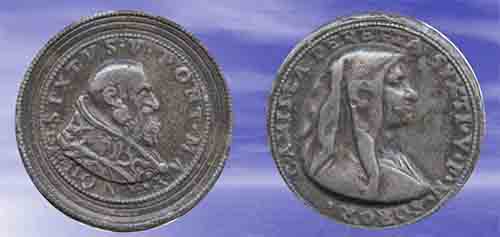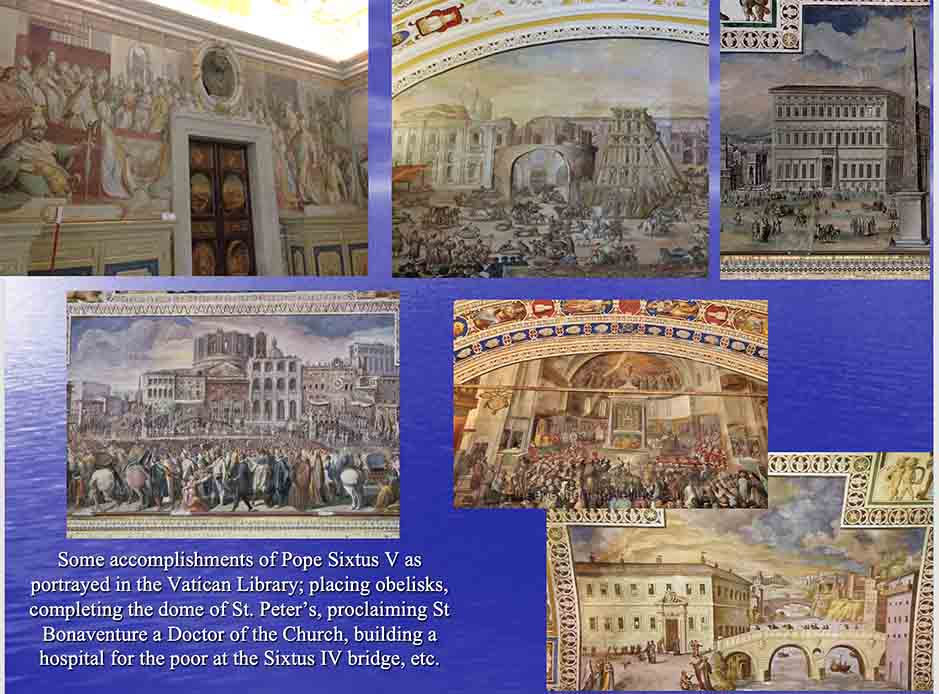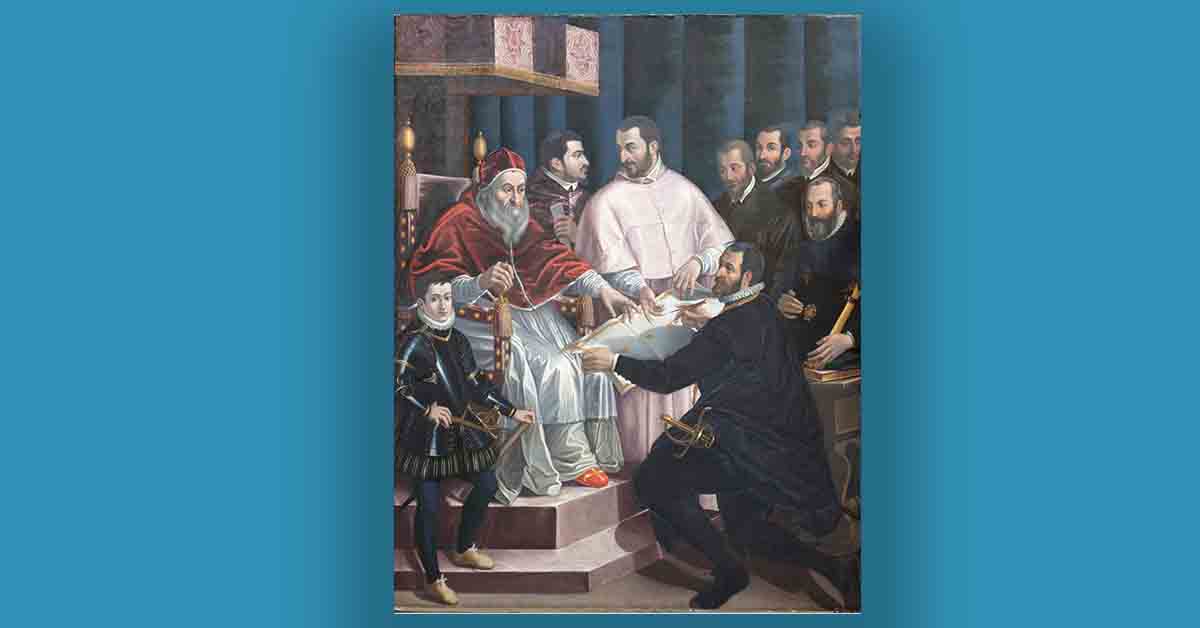Franciscan Popes - Part 8b
(An excerpt from a presentation by friar Joseph Wood OFM Conv.
Read the introduction to this series
Read Part 2 of the the series: Pope Gregory XI?
Part 3: Pope Nicholas IV
Part 4: Pope Alexander V
Part 5: (pope) Nicholas V
Part 6: Pope Sixtus IV
Part 7: Pope Julius II
Part 7b: Cardinal Nephews
Part 8: Pope Sixtus V)
The painting above shows Pope Sixtus with his advisors pointing out and approving his many projects with his favorite architect, Domenico Fontana.
Sixtus’ grandnephew, Alexander Peretti, 14, named Cardinal Nephew at his uncles’ accession, stands beside the pope in military dress as one of his closest advisors. Cardinal Alexander Peretti di Montalto (1571-1623), remained a restorer of churches and shrines throughout his life, including many Franciscan sites. Besides being Cardinal Nephew (Secretary of State) during his uncle’s pontificate, he became a papal ambassador and Cardinal Protector of many religious Orders.

Another notable relative who became an invaluable co-worker during the reign of Pope Sixtus, was his own sister, Camilla Peretti (1519-1605). She was one of an influential group of Roman noblewomen who supported the Counter Reformation through their patronage of architecture.
Among many projects, she helped design and maintain her brother’s cardinalatial residence and gardens, the Villa Montalto.
The pope’s sister, Camilla Peretti, a formidable character, appears to have been a major force in Sixtus’ administration, especially noting her key role (along with Domenico Fontana) in the redesigning of the streets of urban Rome.

Rome significantly shrunk in size during the Middle Ages from over one million to 17,000. The city had become an unorganized collection of structures and unattended streets. As the Church in Rome gained more influence at the beginning of the Renaissance, several popes began to straighten some important streets. However, it was only by 1585, when Sixtus ascended the papal throne, that reform and renewal began in earnest. Sixtus was determined to re-create Rome as the center of Christianity, Reformation or not.

Sixtus – along with Domenico Fontana and his sister Camilla Peretti – created a plat for circulation that would connect major spaces and structures by means of the already present – but neglected – ancient monuments of Rome, its many obelisks. This did more for Rome than any single building project could have ever accomplished. It provided a simple and understandable framework for future building that would continue long after Sixtus’ papacy.

Next up is Pope Clement XIV (1769-1774)



